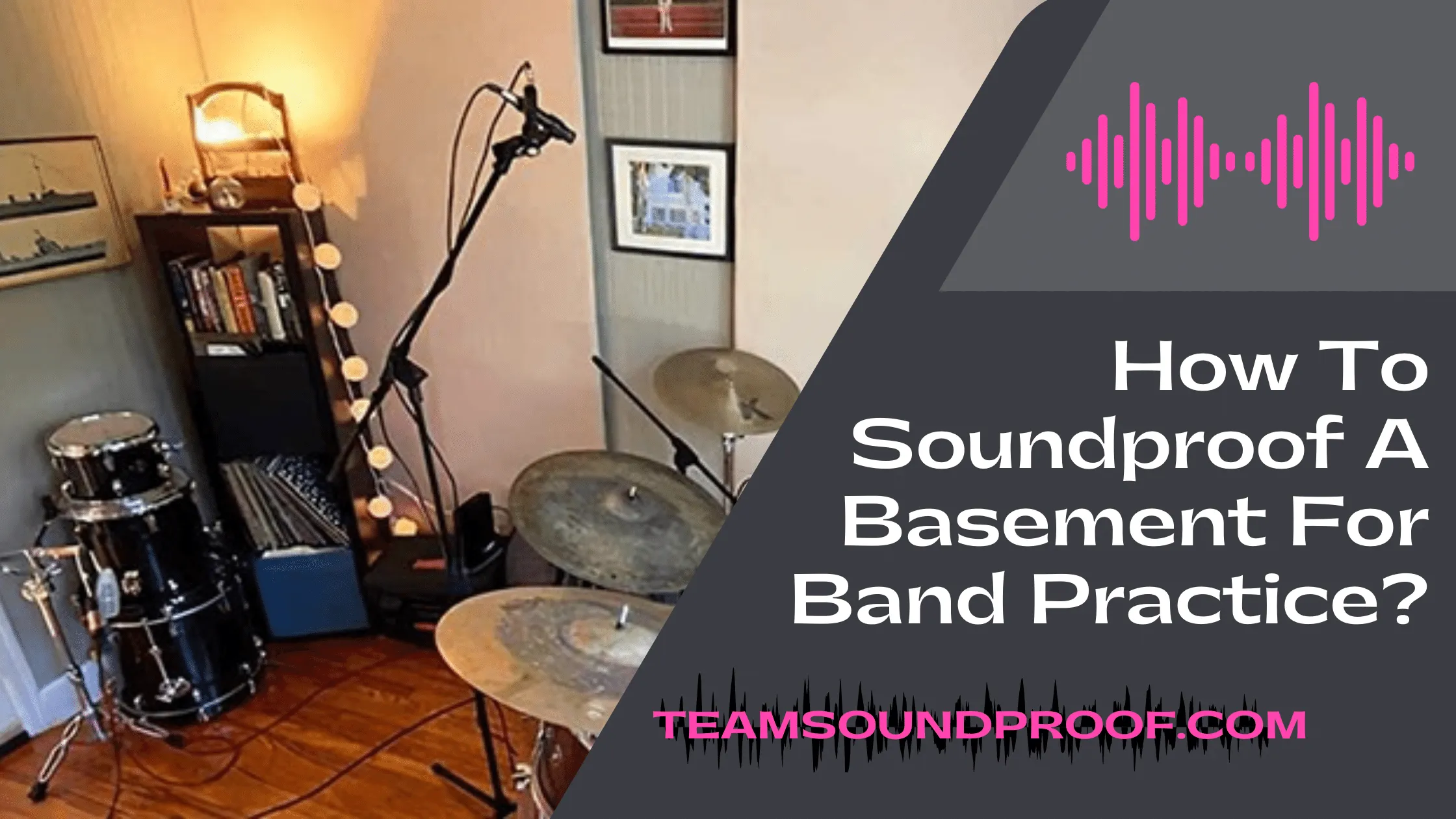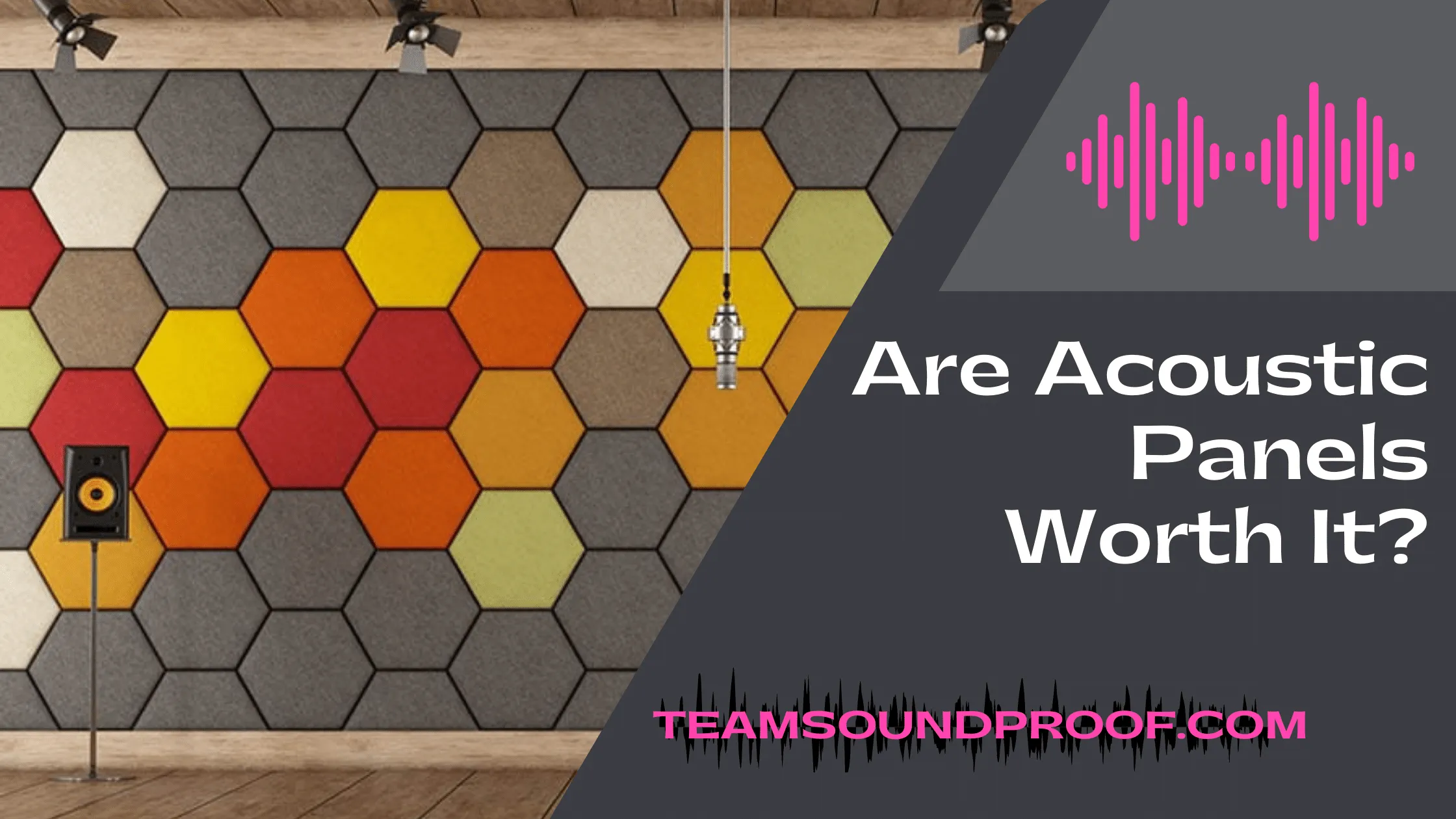Soundproofing your basement can make it a great multipurpose space — be it an extra living room, office, or music studio. But often this means you need to tackle the problem of sound transfer between floors and rooms. If you’re dealing with noisy neighbors below you or if your own children are getting on your nerves upstairs, here are some great tips and tricks for How To Soundproof Basement!
How to Install Soundproofing in Your Basement:
- The first thing you will need to do is start by learning what soundproofing is and how it works. Soundproofing is the process of blocking, absorbing or reducing the amount of noise that can travel through a surface or space to another area. This can be done in several different ways with building materials as well as other methods such as using acoustical panels on walls and ceilings.
- After you understand what soundproofing involves, you will need to figure out where it needs to be installed in your basement. Some common areas for soundproofing include exterior walls and windows, interior rooms that are close together with no insulation between them and spaces around pipes and ductwork within the basement itself. You may also want to consider adding soundproofing to your floors as well if you are worried about noise traveling up from below.
- Now that you know where the soundproofing is needed, it is time to start planning out how you will do it. This often involves deciding what type of materials you want to use and where they should be installed. While there are many different types of soundproofing products available on the market today, some of the most common include insulation, foam panels, batten strips that attach to walls and ceilings, rubber mats or vinyl tiles and carpet padding and liners for areas like stairwells that may need extra protection against sounds coming through them.
- The next step is to begin installing your soundproofing materials. This can vary depending on the product you choose and whether or not it comes with instructions for installation, but often involves cutting pieces of foam panels, batten strips and other materials as needed and then attaching them using common building tools such as screwdrivers or nails, caulk guns, glue or adhesive tapes. Always follow any specific instructions that come with the products you are using so that they work properly while making sure you keep track of how many pieces you are working with at any given time so that they go up in the right place to create a complete and effective barrier between two areas.
- Once all of your soundproofing is installed and secured in place, your basement should be quieter. However, you may need to add a few finishing touches such as painting the area or adding rugs to make it feel more like home.
What Is Soundproofing and Why Do You Need It in Your Basement?
Soundproofing is the process of blocking, absorbing or reducing unwanted noise in a particular space such as your basement. This can be important for a number of reasons, including preventing excessive noise from disrupting family life or causing problems with neighbors, keeping sound from traveling through walls and floors to areas where it may not be wanted, reducing the amount of ambient noise in a room and allowing those who live there to focus better on activities that require concentration, and creating a more comfortable environment for everyone by limiting loud noises that might otherwise cause stress or discomfort.
There are many different reasons why you may need soundproofing in your basement. Some common examples include situations where there are rooms within the basement that share walls without any insulation to prevent noise from traveling through them, areas where there are pipes or ductwork that carry sounds easily throughout the space and maybe a nuisance for those who live below if they are not properly insulated, rooms that contain heavy machinery such as generators or heaters that can create loud noises when they operate, and basements with no windows or entryways that provide an easy path for sound to travel through.
A variety of different materials and methods for soundproofing basements include foam panels and strips that attach to walls and ceilings, insulation made from fiberglass or other materials, rubber mats or vinyl tiles on floors, carpet padding or liners particularly useful for stairs where noise may travel easily through steps, heavy curtains hung near entryways when they are not needed so they can block sounds from passing through, and more. The type of soundproofing you choose will depend on your unique situation as well as any available resources you can use to install it professionally or yourself instead if necessary.
After soundproofing your basement, you should notice a significant decrease in the amount of noise that is able to travel through it. This can help to improve the overall quality of life in your home as well as the ability of those who live there to focus on the activities they need or want to do without being disturbed. You may also see a reduction in other types of environmental noise that may be an issue, such as heating and cooling equipment or traffic sounds from outside, depending on the exact materials you choose and how they are installed.
Tips for Keeping Your Basement Noise-Free:
- The first step in keeping your basement noise-free is to understand the types of noise that may be present in your space and how they can be addressed. This may involve doing some research into different materials, such as foam panels, insulation, and flooring options, as well as strategies for installing these materials to achieve maximum noise reduction.
- Another key component of effective soundproofing is the layout of your basement, including the positioning of walls, doors, pipes and other structures that can impact how sound travels through the space. Taking careful measurements and planning out where you will install different materials or strategically place furniture or other objects can help you better control the flow of sounds within your basement.
- In addition to using soundproofing materials and strategies, there are a number of other tips you can adopt to further reduce noise in your basement. These may include limiting the amount of activity that takes place in the space, installing acoustic panels or sound-absorbing materials on walls and ceilings, investing in heavy curtains or blankets that can be used to cover windows and entryways when needed, and more.
- Whether you are trying to keep out unwanted noise from outside sources, such as traffic or construction works, or simply create a quieter environment for yourself within your own home, keeping your basement noise-free is possible if you follow these steps and work with the right professionals or tools as needed. With careful planning and implementation of soundproofing techniques, you can enjoy a peaceful and relaxing space in your home.
Conclusion:
In conclusion, following these steps will help you soundproof your basement so that it can serve as an effective recording studio, practice space, or simply a place to get away from the noise of everyday life. By taking the time to invest in quality materials and making sure that every inch of your basement is insulated, you can create a peaceful haven in your own home.
Frequently Asked Questions
What Are Some of The Key Considerations when Soundproofing a Basement?
One important consideration is to choose materials that provide effective soundproofing, such as high-density insulation, heavy curtains or acoustical panels. Additionally, you should pay close attention to all areas of your basement that could be sources of noise transfer, including doors, windows, and flooring surfaces. It may also be helpful to seek the advice of a professional sound engineer or contractor when choosing materials and designing your soundproofing strategy.
How Can I Prevent Echoes in My Basement Space?
There are several different methods for reducing echoes and reverberation in your basement space. For example, you can use acoustic foam panels on the ceiling and walls to absorb excess sound energy and minimize unwanted echoes. You may also consider adding sound barrier tiles under carpeting or other materials in order to further reduce sound vibrations from impacting the rest of your home.
How Can I Make My Basement More Comfortable for Living or Working?
To make your basement space more comfortable for living or working, it is important to consider factors such as ambient temperature and humidity levels. You may want to install a dedicated heating or cooling system, or insulate walls and floors to help maintain a comfortable temperature. Additionally, you may also want to look into reducing noise transfer by using soundproofing materials, such as floor mats or sound insulation panels. With these steps, you can create a warm and inviting space that is perfect for any activity!






